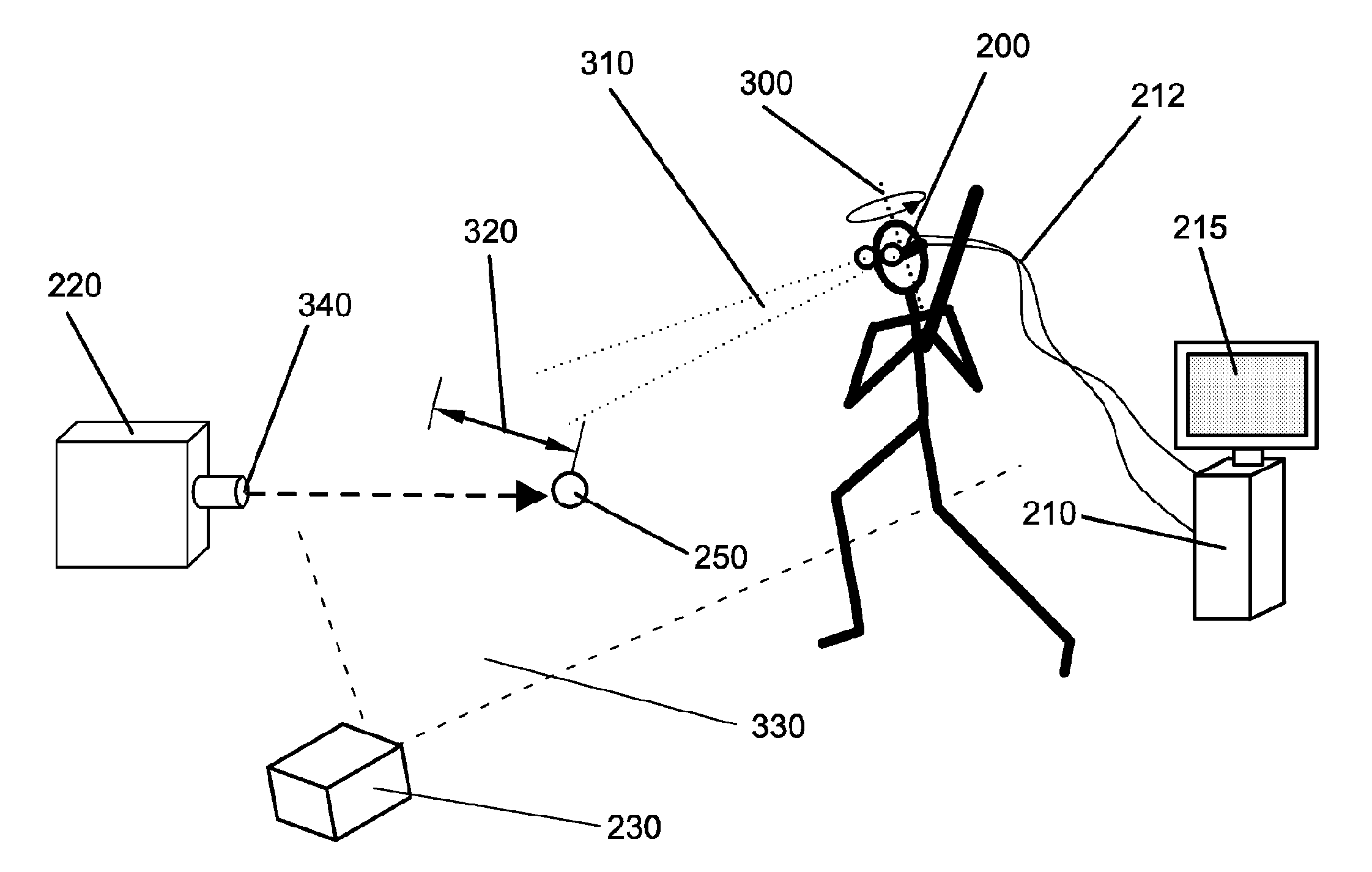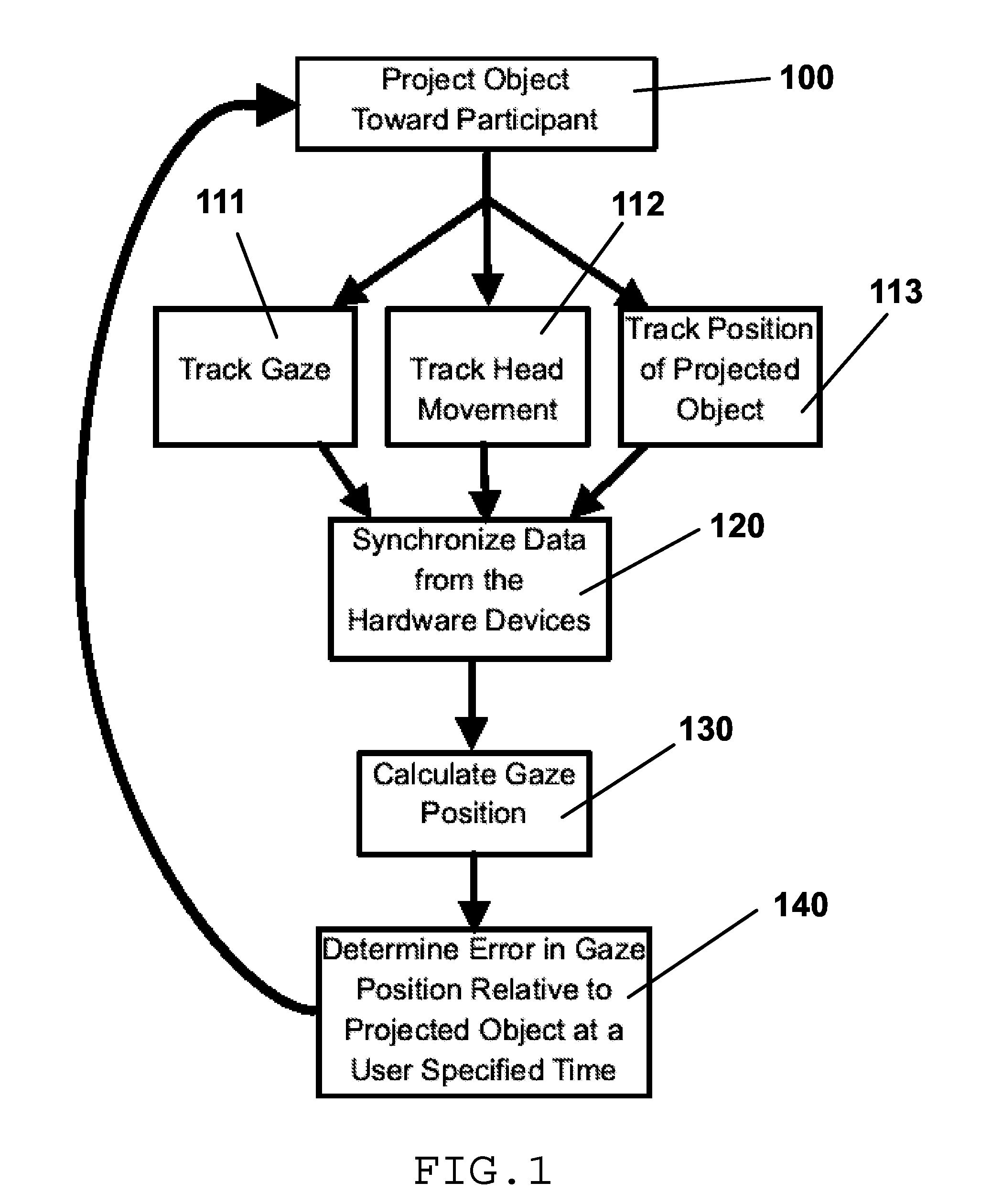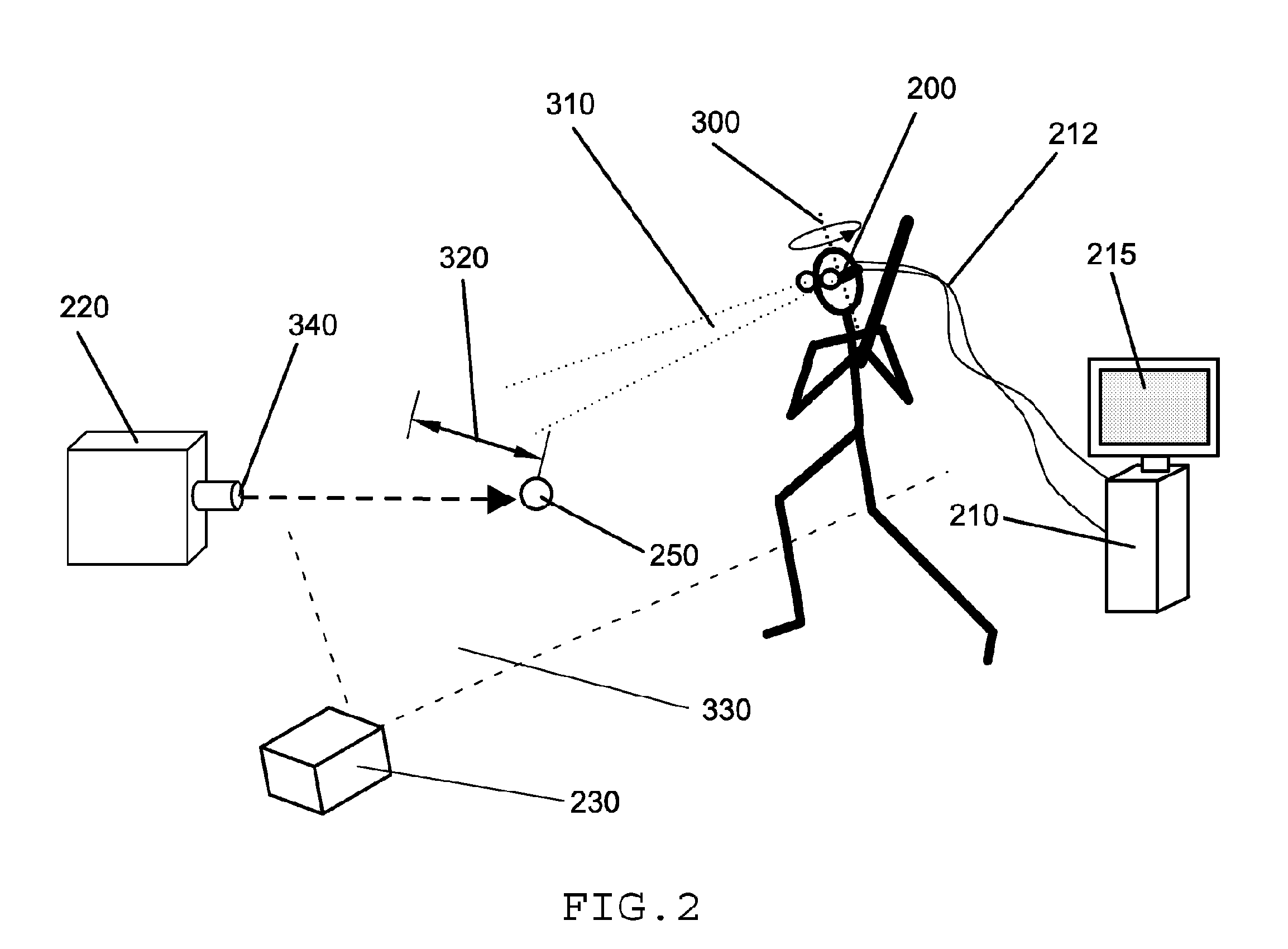Gaze tracking measurement and training system and method
a training system and technology of gaze tracking, applied in the field of gaze tracking, can solve the problems of inconvenient training, inconvenient training, and inconvenient training of athletes, and achieve the effect of improving athletic performance and improving athlete's ability to track
- Summary
- Abstract
- Description
- Claims
- Application Information
AI Technical Summary
Benefits of technology
Problems solved by technology
Method used
Image
Examples
Embodiment Construction
)
[0020]FIG. 1 is a block diagram illustrating sequential steps of an embodiment of a head and gaze tracking system. The initial step 100 is to project the object toward the participant. Next, steps 111, 112, and 113 may be implemented substantially in concert. That is, the gaze of the participant, the participant's head movement, and the position of the projected object may be recorded simultaneously. After steps 111, 112, and 113 are complete, the data from the relative hardware devices is synchronized in step 120. This synchronization step may be completed by a computer or other suitable device. Once the synchronization is complete, the gaze of the participant is calculated in step 130. In step 140, the computer then determines the error in the participant's gaze relative to the actual position of the projected object. This error may be calculated for specific times predetermined by the user or may optionally be calculated for the entire path of the projected object. The data outp...
PUM
 Login to View More
Login to View More Abstract
Description
Claims
Application Information
 Login to View More
Login to View More - R&D
- Intellectual Property
- Life Sciences
- Materials
- Tech Scout
- Unparalleled Data Quality
- Higher Quality Content
- 60% Fewer Hallucinations
Browse by: Latest US Patents, China's latest patents, Technical Efficacy Thesaurus, Application Domain, Technology Topic, Popular Technical Reports.
© 2025 PatSnap. All rights reserved.Legal|Privacy policy|Modern Slavery Act Transparency Statement|Sitemap|About US| Contact US: help@patsnap.com



